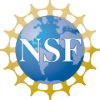On Tuesday, the National Institute of Standards and Technology announced a solicitation for proposals that support long-term research in next-generation semiconductor technology, calling the work “critical to the future of the U.S. electronics industry.” Through the solicitation, NIST plans to issue one award of up to $2.6 million in Federal cost-shared funding (a minimum of 25 percent of a project’s budget must come from non-Federal sources) for the project’s first year, with the potential for continued funding for up to five years. Proposals are due by 5pm EDT on Monday, April 16th. According to the solicitation: One area where a clear long-term technological challenge resides is in the development of new […]
Computing Community Consortium Blog
The goal of the Computing Community Consortium (CCC) is to catalyze the computing research community to debate longer range, more audacious research challenges; to build consensus around research visions; to evolve the most promising visions toward clearly defined initiatives; and to work with the funding organizations to move challenges and visions toward funding initiatives. The purpose of this blog is to provide a more immediate, online mechanism for dissemination of visioning concepts and community discussion/debate about them.
Archive for the ‘resources’ category
NIST: $2.6 Million for Novel Semiconductor Research
March 23rd, 2012 / in research horizons, resources / by Erwin GianchandaniAgencies Seek White Papers, Announce Cybersecurity Symposium
March 21st, 2012 / in big science, research horizons, Research News, resources / by Erwin GianchandaniEarlier this month, the National Coordination Office (NCO) for the Networking and Information Technology Research and Development (NITRD) Program — the Federal program that provides a framework and mechanisms for coordination among 15 Federal agencies that support networking and information technology research and development — issued a Call for Papers for the National Symposium on Moving Target Research. This daylong symposium, which comes on the heels of the National Science and Technology Council (NSTC) Trustworthy Cyberspace: Strategic Plan for the Federal Cybersecurity Research and Development Program report published in December, “intends to bring together and publish the work of the Moving Target cybersecurity research community to provide a basis for building on […]
Update: “Bypassing the Password”
March 20th, 2012 / in big science, research horizons, Research News, resources / by Erwin GianchandaniBack in January, we described a new Defense Advanced Research Projects Agency (DARPA) program focused on innovative research proposals “in support of the development of new software-based biometric modalities” that go beyond passwords for identity validation. Now The New York Times is out with a story that sheds more light on the initiative: IMAGINE sitting down at your work keyboard, typing in your user name and starting work right away — no password needed. That’s a vision that the Defense Advanced Research Projects Agency, part of the Defense Department, wants to turn into a reality. It will distribute research funds to develop software that determines, just by the way you type, […]
“U.S. Accelerating Cyberweapon Research”
March 19th, 2012 / in big science, research horizons, Research News, resources / by Erwin GianchandaniThe Washington Post is out with an article today about the Pentagon’s “accelerating efforts to develop a new generation of cyberweapons capable of disrupting enemy military networks even when those networks are not connected to the Internet”: Last year, to speed up the development of cyberweapons, as well as defensive technology, then-Deputy Defense Secretary William J. Lynn III and Marine Corps Gen. James Cartwright, then vice chairman of the Joint Chiefs of Staff, placed $500 million over five years into the budget of the Defense Advanced Research Projects Agency (DARPA), one of the Defense Department’s premier research organizations. The agency also has launched new cyber-development initiatives, including a “fast-track” program. […]
Navy Announces “Cutting-Edge Lab” for Robotics, Autonomous Systems
March 16th, 2012 / in policy, research horizons, Research News, resources / by Erwin GianchandaniEarlier today at a ribbon-cutting ceremony featuring White House Office of Science and Technology Policy (OSTP) Director John Holdren and Chief of Naval Research Rear Admiral Matthew Klunder, the Naval Research Laboratory (NRL) opened the Laboratory for Autonomous Systems Research (LASR) on its campus in Washington, DC. LASR aims “to support cutting-edge research in robotics and autonomous systems of interest to the Navy, the Marine Corps, and the Department of Defense, [including] unmanned underwater vehicles, autonomous firefighting robots, and sensor networks.” According to a post on the OSTP Blog announcing the opening: LASR will … advance the goals of the President’s National Robotics Initiative, a multi-agency effort to strengthen U.S. leadership in robotics and to […]
ARPA-E’s Open Call for “Transformational Energy Technologies”
March 16th, 2012 / in big science, conference reports, policy, research horizons, resources / by Erwin GianchandaniEarlier this month, the Advanced Projects Research Agency-Energy (ARPA-E) released a $150 million funding opportunity open to all breakthrough energy technologies. Individual awards under the Open FOA will range between $250,000 and $10 million. According to the announcement: To address the challenges imposed by the rapidly evolving global energy market, ARPA-E seeks to support transformational research in all areas of energy R&D, including resource identification, extraction, transportation and use, and energy generation, storage, transmission and use in both the transportation and stationary power sectors. Areas of research responsive to this FOA include (but are not limited to) electricity generation by both renewable and non-renewable means, electricity transmission, storage, and distribution; […]








